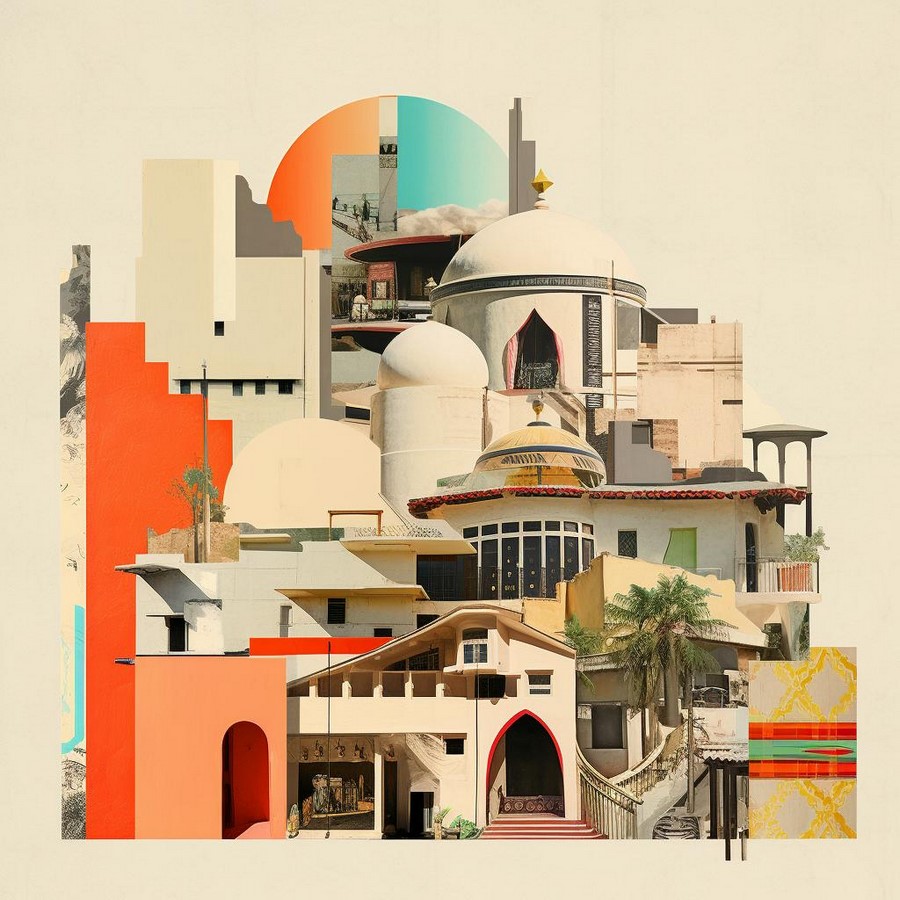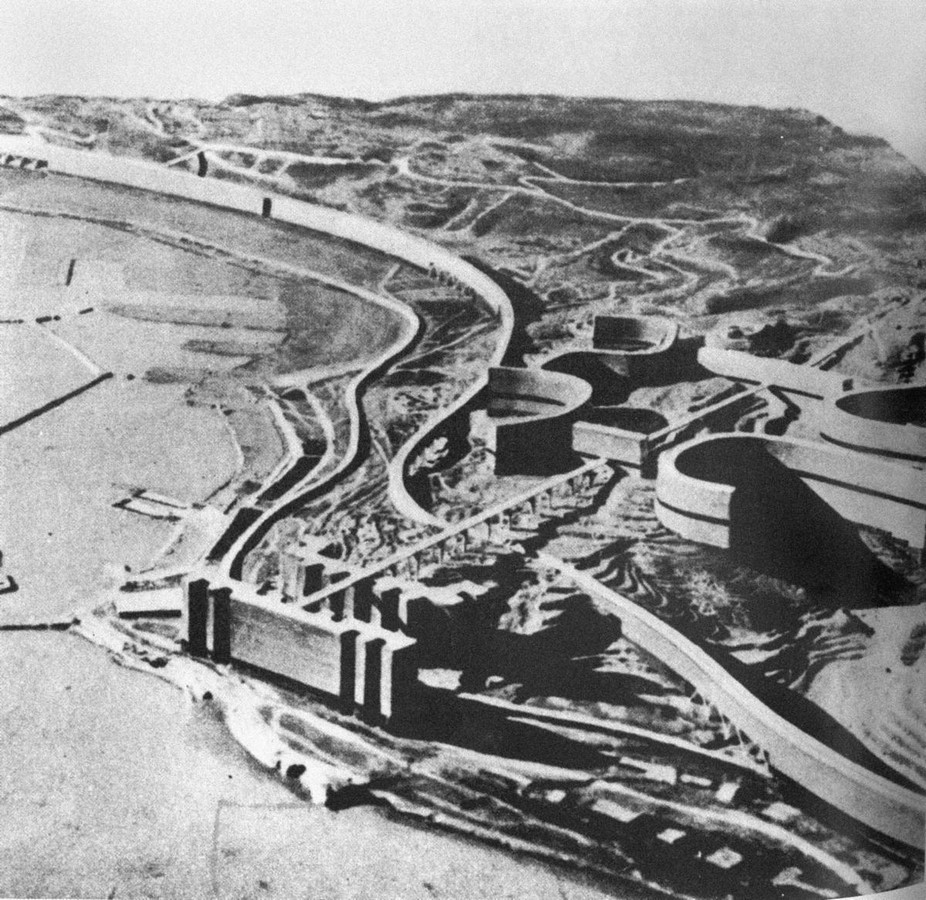A shift towards analyzing postcolonial architecture and design offer in-depth insights into the profound effects of colonialism on the built environment- across a wide variety of different regions, namely, countries that are considered part of the “Global South”. The effects of these transformative contexts extend not only to warping of physical reality- I.e., buildings, spaces, facades, designs- but also, have a profound and deep impact on the sociological psyche of the aforementioned countries: “…architectural discourse demands that we view buildings as events and not simply as inert objects” (Arata Isozaki, Japan-ness in Architecture). To add to this, postcolonial considerations also explore the idea of memory- especially in an urban context, in which this colonial past must be recognized and not be undermined.
And so, an analysis of post-colonial architecture and design entails a trifold analysis; firstly, it requires a consideration of pre-colonial architecture; secondly, an establishment of colonial architecture, as well as a definition of colonialism and its impact on space, and thirdly, and finally, a consideration for post-colonial contexts- social, cultural, and architectural. And so, through an in-depth analysis of The Philippines, as well as a selection of different countries, such as the U.A.E, Algeria, India, and North Africa– a cross-comparative analysis considering each period, school of thought, and context will be provided. Generally speaking, in looking at the aforementioned countries, colonialism introduced- or, rather, superimposed- foreign cultural and architectural influences- often, European or Western- in the colonized countries, resulting in a fusion of indigenous aesthetics and imported design elements.

Imposition of Western architectural styles, materials, and techniques rewarded the entire architectural landscape of given countries. Within the context of the English colonization of India, as well as the French in Indochina and Northern Africa, it was a recurring theme that the colonizer essentially tried to maintain a hegemony on architectural style, which was counteracted by local elites of colonized nations (Colonialism and Architecture). However, within a general Mediterranean context and by the 1920s, there existed an architectural overlap between architecture features “with unornamented rectilinear white boxes built on both sides of the Mediterranean” (James-Chakraborty)- thus, proposing that themes of colonialist intervention, cultural assimilation, and architecture have become incredibly intertwined. Within British-era colonization in India, neoclassical and Victorian elements became introduced, as seen in the Victoria Terminus in Mumbai. In the Gulf region, vernacular elements, such as featured courtyards, wind towers, and sikkas (small corridors) were the essence of an architecture that sheltered its users against the harsh climate and extreme elements- Colonial influence, once again through the British, led to the integration of modernist styles, seen in early buildings in Dubai and Kuwait.
However, oftentimes, this colonial architecture was inevitably violent, a common example highlighting this through renowned architect Le Corbusier’s plan for Algiers, 1931–42: His plans for the city of Algiers essentially involved colonial projections. Spaces were segregated as per class and race, typical of the colonialist ideology (Haddad, 2016, 127-128). These concepts of segregation and dehumanization were further repeated well into the 1950s; for instance, European architects designing housing in North Africa did not feel obliged to provide Muslims with indoor plumbing” (James-Chakraborty).

As in all postcolonial conditions, the original conditions prior to colonialism must be considered. In the case of the Philippines, vernacular architecture may be primarily identified with “the nipa hut… or the ‘bahay kubo’ (a cube house)…” – a symbol of The Phillipines’ pre-Hispanic era (Pangilinan, 2021, 8). The use and application of the nipa hut were also one that was regionally practical and could easily be rebuilt upon need- most notably after intense environmental conditions- and so, was technically, by essence, a non-permanent structure. Upon the colonization of the Philippines by the Spaniards, however, a new set of imported ideals and architectures were imposed- of which was the application of stone, rather than traditional vernacular materials: these were often imported materials such as brick or stone, further reinforced with the buttress to ensure their structural strength during earthquakes (Pangilinan, 2021, 9). Eventually, a second layer of what may be defined as colonialism- as well as postcolonialism- was the application of Modernism and the International Style- within the case of the Philippines, this was imported via American culture. This was incredibly welcomed, as it defined a break from the previous colonial architectural morphology, since it became a symbol of “emancipation from the colonial powers” (Contested modernities. postcolonial architecture in Southeast Asia). A hybrid between the three was eventually actualized through “The Church of the Holy Sacrifice”, which can “be seen as a post-colonial architecture that possesses both characteristics of Western modernism principles and elements of the bahay kubo” (Pangilinan, 2021, 23). And so, postcolonial identity is characterized by the unique fusion of indigenous heritage and contemporary influence, producing an almost promiscuous hybrid of aesthetics and design.

To conclude, it is relevant and important to consider that the issue of postcolonial identity is one central to the non-Western designer: “A question that disturbs most “non-Western” architects, Prakash reminded, is the burden of identity, namely the expectation that a “non-Western” architect represents his/her identity in buildings, while no such requirement holds for European or North American architects” (Haddad, 2016,132)- in a sense, establishing that identity- and defining identity through design- is a recurring theme that defines postcolonial architecture, and one that regurgitates it in its irony. Furthermore, themes of power- most notably in the contemporary age- are heavily intertwined with postcolonial attitudes, since the new Modernist style defied, often violent, colonial influence.
The aforementioned point is also applied in the United Arab Emirates (UAE) and the Gulf region, essentially showcasing the interplay between traditional Arabian design and modern skyscrapers, reflecting the dynamic influence of colonialism, globalization, and power. Today, numerous architects still employ themes and identities of postcolonialism, including Indian Balkrishna Doshi, who fuses traditional motifs with modern elements, Jordan’s Rasem Badran, who aims to revive traditional design principles, as well as Kenyan Starchitect David Adjaye, who draws from local tradition, while merging it with contemporary culture, among many others. And so, the topic of post-colonialism becomes one that is intertwined with everyday architectural discussions.
References:
Anon, (n.d.). Colonialism and Architecture – Postcolonial Studies. [online] Available at: https://scholarblogs.emory.edu/postcolonialstudies/2014/06/20/colonialism-and-architecture/.
Kusno, Abidin. (2001) ‘Behind the postcolonial: Architecture, urban space and political cultures in Indonesia. (Indonesia)’, Journal of Southeast Asian Studies, 32(3), 466+, available: https://link.gale.com/apps/doc/A80785371/AONE?u=anon~4b91d36a&sid=googleScholar&xid=7a34b624 [accessed 10 Aug 2023].
Contested modernities. postcolonial architecture in Southeast Asia – announcements – e-flux (no date) e. Available at: https://www.e-flux.com/announcements/413336/contested-modernities-postcolonial-architecture-in-southeast-asia/ (Accessed: 10 August 2023).
Haddad, E.G. (2016). A Critical History of Contemporary Architecture 1960-2010. Routledge.
James-Chakraborty, K. (2021) Beyond Postcolonialism: New Directions for the History of Nonwestern Arcchitecture, Frontiers of Architectural Research, vol. 3, no. 1. Available at: https://doi.org/10.1016/j.foar.2013.10.001. [accessed 10 Aug 2023]
James-Chakraborty, K. (2021) Postcolonial thought and the emergence of global architectural histories, Oxford Research Encyclopedia of Literature. Available at: https://doi.org/10.1093/acrefore/9780190201098.013.1282 (Accessed: 10 August 2023).
Pangilinan , E. (2021) Colonial and Post-Colonial Architecture: How did colonialism impact architecture in the Philippines? [Preprint].














